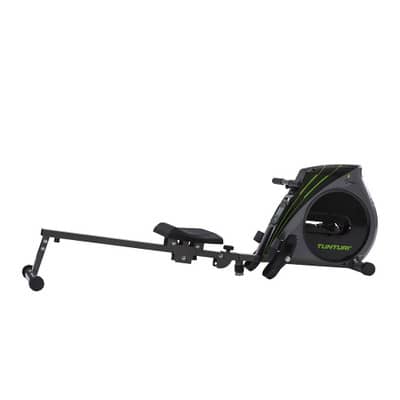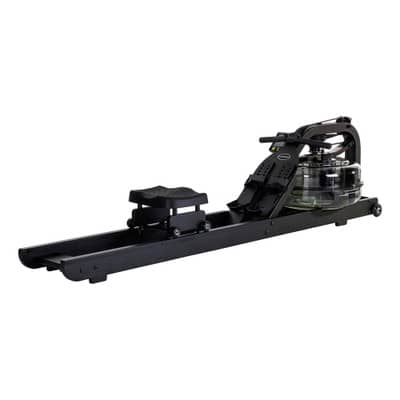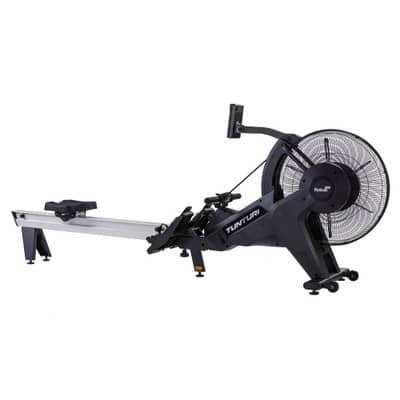Rowing machine
Hardly any other piece of fitness equipment targets as many muscle groups simultaneously as the rowing machine. Would you also like to train your endurance and strength intensively with a rowing machine? Discover rowing machines for every training level at Fitstore24.
-12%
3,649.00 3,220.00 €*
free shipping
In stock, available
-19%
779.00 629.00 €*
free shipping
In stock, available
-19%
2,479.00 1,999.00 €*
free shipping
In stock, available
BLACKWEEK
-{{UVPPercentDiscount}}%
new {{jahr}}
{{#UVP}} {{UVP}} {{/UVP}} {{record.Preis}}*
{{#FreeShipping}} free shipping {{/FreeShipping}} {{^FreeShipping}} excl. shipping costs {{/FreeShipping}}
{{^onStock}}Lieferzeit: {{/onStock}}{{record.Lieferbarkeit}}
- {{caption}}
- {{caption}}
- {{caption}}
- {{caption}}
- ...
- {{caption}}
- ...
- {{caption}}
- {{caption}}
- {{caption}}
- ...
- {{caption}}
- {{caption}}
- ...
- {{caption}}
- {{caption}}
- {{caption}}
- {{caption}}
What is a rowing machine?
With a rowing machine, you train both strength and endurance at the same time, as a rowing machine simulates the movements of rowing on water. This gives you a full-body workout that utilises around 80% of your entire body muscles. At the same time, the cardiovascular system is strengthened, which improves your general stamina and condition.
How does a rowing machine work?
A rowing machine consists of a seat that moves on a rail, footrests to which the feet are fixed and a handle that is connected to a resistance system.
The movement sequence on the rowing machine consists of four steps:
-
Starting position: you sit on the rowing machine, your legs are bent, your feet are fixed on the footrests and your upper body is tilted slightly forwards. Your arms are stretched forwards and hold the handle.
-
Pull-through: You push away from the footrests with your legs (your upper body remains tilted forwards) and as soon as your legs are fully extended, you move your upper body backwards and pull the handle towards your chest.
-
End position: The legs are extended, the handle is pulled towards the lower ribcage and the upper body is tilted slightly backwards.
-
Recovery: Stretch your arms forwards again and bend your legs at the same time to return to the starting position.

What are the benefits of training on the rowing machine?
On the rowing machine, you train up to 80 % of your body muscles at the same time:
-
Arm and shoulder muscles
-
abdominal muscles
-
Back muscles
-
gluteal muscles
-
leg muscles
Thanks to the guided movement sequence, the training is also particularly easy on the joints. Regular training on the rowing machine strengthens your cardiovascular system, which makes the rowing machine an excellent piece of equipment for cardio training. At the same time, regular training on the rowing machine helps to improve your posture.
3 tips for training on the rowing machine
To ensure that your training on the rowing machine soon brings the desired results, you should keep the following in mind:
-
Accurate execution: rowing beginners should perform the movement consciously, slowly and with little effort until they have internalised the sequence of movement phases.
-
Shoulder position: The shoulders should always be horizontal and relaxed. It is important to maintain sufficient distance from the head and not to pull the shoulders up.
-
Head posture: The head should remain in a neutral, upright position. It is always an extension of the spine.
-
Position of the elbows: The elbows should not be splayed out to the side, but should be kept close to the body.
This is why a rowing machine is ideal for training at home
With a rowing machine at home, you can train regardless of the weather and season. Rowing machines with water provide a particularly realistic feeling. Here, a filled water tank creates the right resistance and a splashing sound is produced at the same time. Wooden rowing machines can also bring back memories of your last rowing experience in a boat.
What you should look out for when buying a rowing machine
Are you looking to buy a rowing machine and wondering what to look out for? We reveal five aspects that you should take into account when making your decision:
-
Different braking systems
-
Type of rails
-
Body size and load capacity
-
Space requirements and storage
-
Noise level
Different braking systems
Depending on the model, the resistance during rowing is created by an air, water, magnetic or hydraulic braking system.
-
Rowing machine with air resistance: Air rowing machines generate resistance with a fan. They are light and easy to store, but make noise and require more maintenance than water rowing machines. The monitors on air rowing machines are particularly precise.
-
Rowing machine with water resistance: The resistance is generated by the water in a water tank. This creates a natural rowing sensation, while the rippling sound has a relaxing effect for many people. The resistance is regulated by the amount of water in the tank.
-
Rowing machine with hydraulics: Rowing machines with hydraulic systems are compact and often less expensive. The resistance is generated by hydraulic cylinders and can be varied using adjustment screws. They are quiet in operation, but the motion sequence can feel less natural.
-
Rowing machine with magnetic brake system: Rowing machines with magnetic brake systems offer very quiet, even resistance that is easy on the joints and can be continuously adjusted. They are low-maintenance and suitable for all fitness levels.
Type of rails
There are rowing machines with single or double rails. Rowing machines with a single rail are more compact and lighter. The single guide rail can make training feel a little wobbly. A double rail provides more stability, but also makes the rowing machine as a whole somewhat larger and heavier.
Body size and load capacity
Make sure that the rowing machine is suitable for your height and can support your weight. Most rowing machines are designed for a maximum body weight of 100 to 150 kg. The seat height, which is different for every rowing machine, is also important for ergonomics.
Space requirements and storage
Make sure that you can easily store the length of the rowing machine. Some models can also be stored upright. In some cases, the rowing machine is foldable, allowing you to store it in a particularly space-saving manner.

Volume
This point is particularly important if you live in a rented flat. Braking systems with water and magnetic resistance are the quieter option.
Rowing machine, cross trainer, ergometer - can't decide?
There are many fitness machines that allow you to train strength and endurance at the same time. If you're not sure which one to choose, we've put together an overview for you here:
Rowing machine
|
Calorie consumption per hour |
400 - 800 |
|
Muscles trained |
Full body workout Focus: arms, legs and back |
|
Type of movement |
Rowing |
|
Special feature |
Intensive full-body workout |
Cross trainer
|
Calorie consumption per hour |
250 - 640 |
|
Muscles trained |
Full body workout Focus: arms and legs |
|
Type of exercise |
Similar to cross-country skiing or Nordic walking |
|
Special feature |
Particularly joint-friendly full-body workout |
Ergometer / exercise bike
|
Calorie consumption per hour |
300 - 500 |
|
Muscles trained |
Focus: legs and buttocks |
|
Type of exercise |
Cycling |
|
Special feature |
Endurance training for at home |
Treadmill
|
Calorie consumption per hour |
250 - 700 |
|
Muscles trained |
Focus: legs and bum |
|
Type of exercise |
Natural running |
|
Speciality |
Endurance training, higher load on the joints |
Training on the cross trainer comes closest to the rowing machine in terms of movement and training effect. The training effect on the rowing machine is somewhat more intensive, while the cross trainer is even easier on your joints.
If you place more emphasis on muscle building than cardio training, a weight bench or weight station can also be a good option.
If you are focussing on your lower body, exercise bikes, ergometers and indoor bikes are good alternatives to the rowing machine. Treadmills are also perfect for training your legs and bum, but put more strain on your joints due to the impact.
Buy a rowing machine at Fitstore24
With a rowing machine, you can bring intensive strength and endurance training into your home. Whether you're a beginner or a pro - at Fitstore24 you'll discover the best models for every training level.
Frequently asked questions about Rowing machine
Do you have another question? Contact us, we will advise you free of charge!
Contact
How much does 20 minutes on the rowing machine achieve?

In 20 minutes on the rowing machine, you intensively train your endurance and 80% of your muscles at the same time. At high intensity, you can burn between 200 and 300 calories in 20 minutes on the rowing machine.
What is trained when rowing?

Rowing trains your entire body. The muscles in your arms, back and legs get a particularly intensive workout. Rowing not only builds up your strength, but also trains your endurance.
Which is better: cycling or rowing?

Whether cycling or rowing is better for you depends on your training goals. When rowing, you train your entire body, focussing on your arms, back and legs. If you want to strengthen your leg muscles in particular, cycling is the right choice for you.
How does rowing change the body?

Because rowing uses almost all of the body's muscles, you build up muscles when you train regularly. The intensive endurance training also burns a lot of calories. Rowing therefore has a positive effect on your overall fitness.
Can I lose weight with the rowing machine?

Yes, you can lose weight with the rowing machine. Rowing trains your entire body, burns calories intensively and builds muscle mass. The more muscle mass you have, the more calories you also burn at rest.
Concept2 Rowing Machines | Stil-Fit Rowing Machines | WaterRower Rowing Machine | Hammer rowing machine | Horizon Fitness Rowing Machines | Tunturi Rowing machine | First Degree Rowing Machines | Schwinn rowing machines | Vision Fitness rowing machine | Fluid Rower rowing machine | Nohrd rowing machine | Alle Hersteller |




























